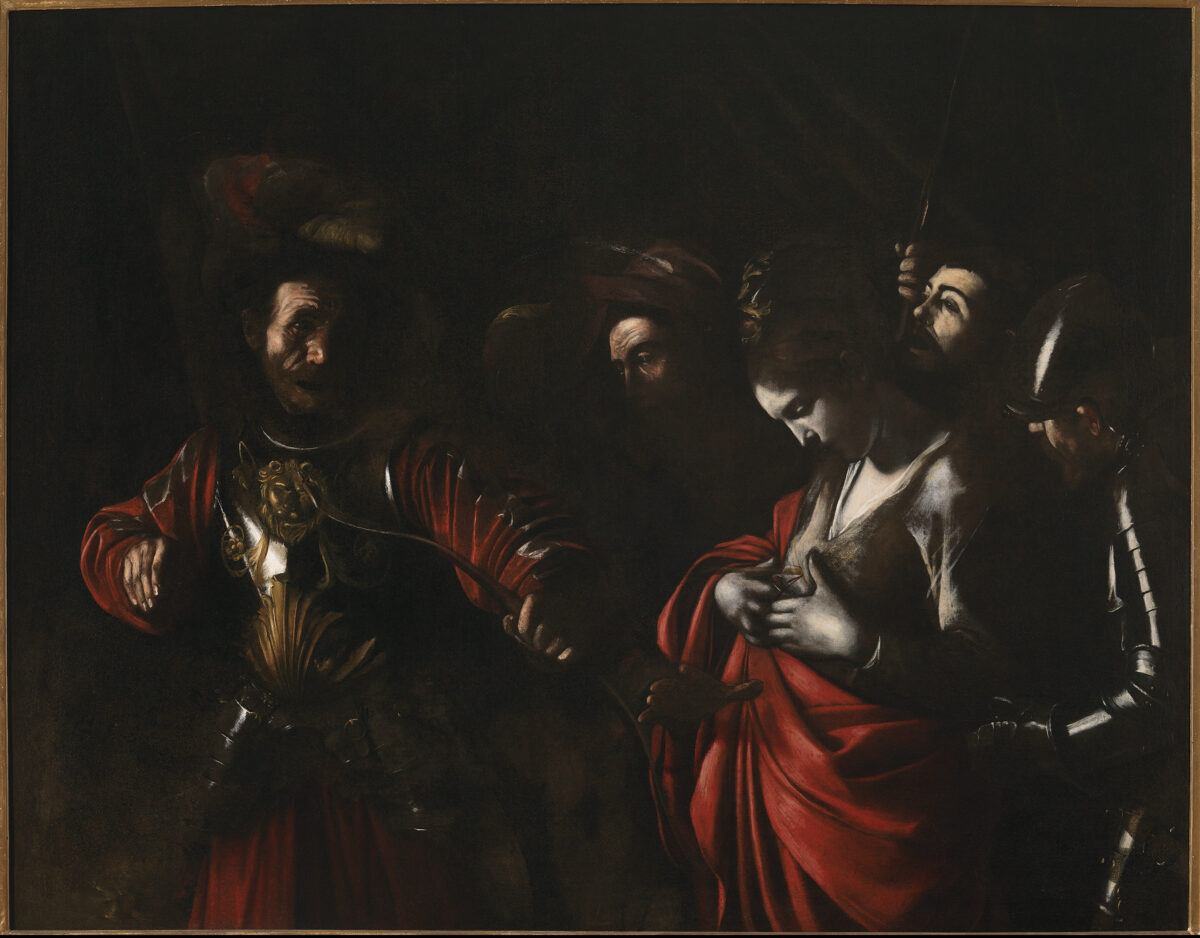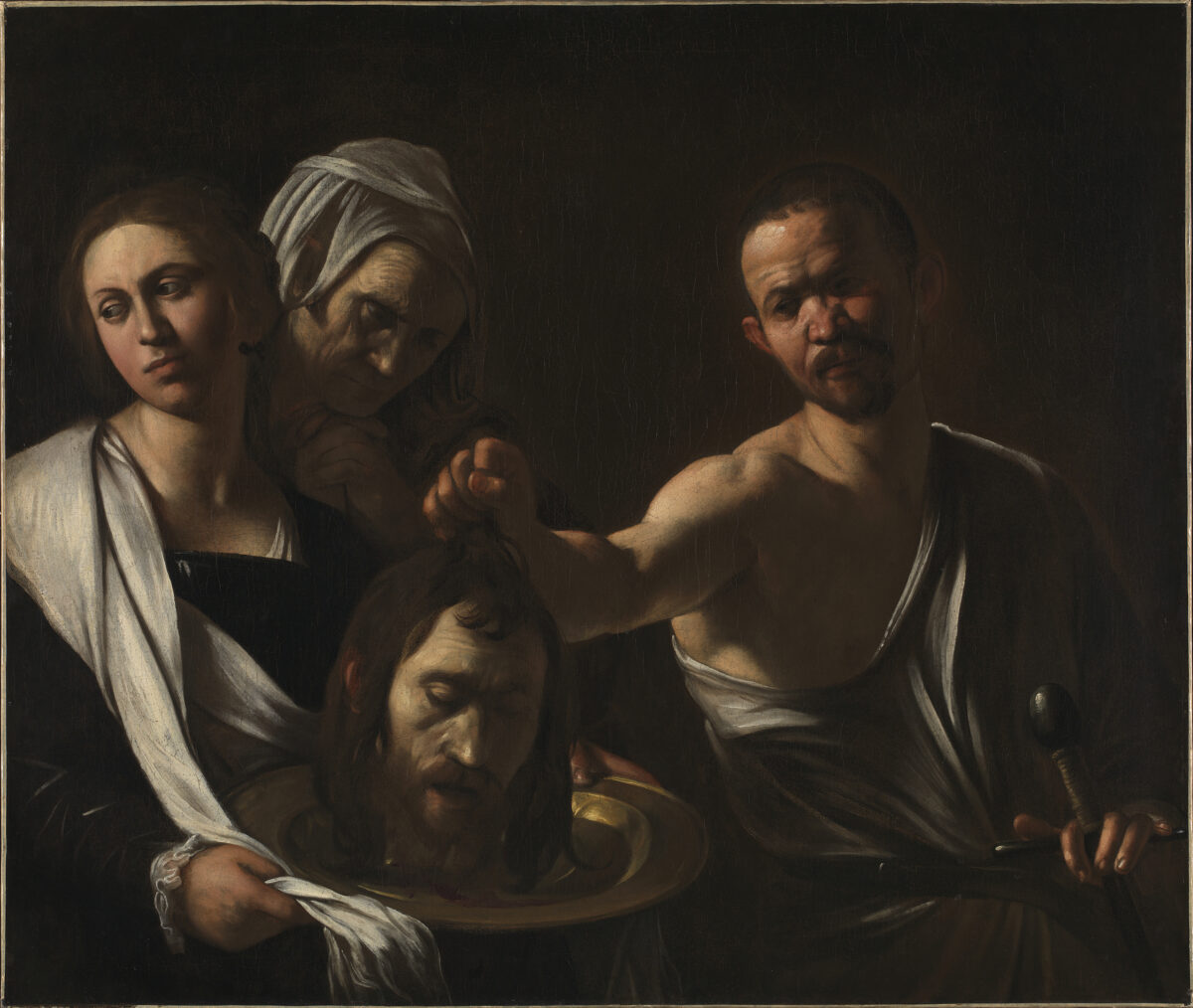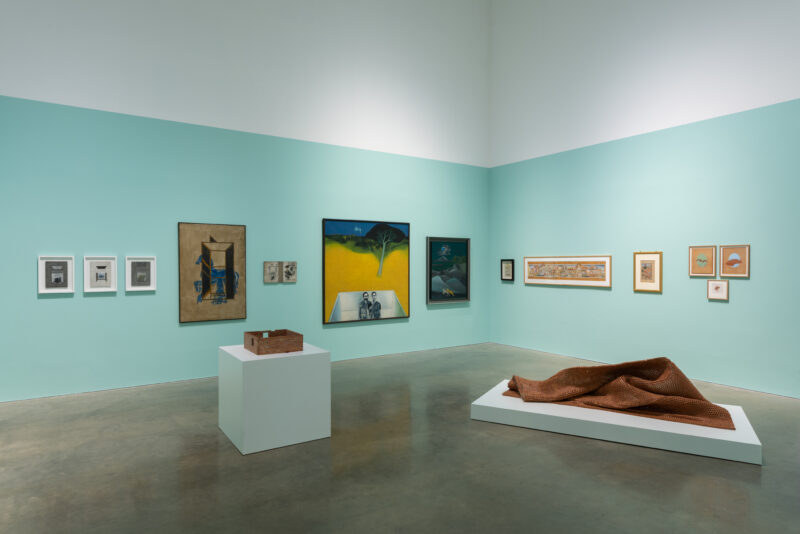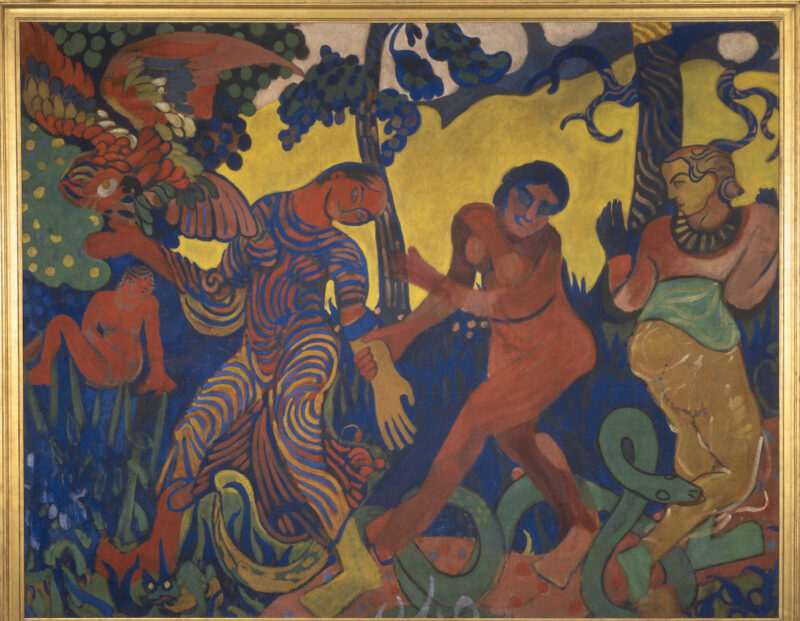Opening this week the National Gallery will display Caravaggio’s last painting, not seen in the UK for nearly 20 years.
In a new exhibition The Last Caravaggio, The Martyrdom of Saint Ursula, 1610, generously lent by the Intesa Sanpaolo Collection (Gallerie d’Italia – Naples) will be displayed alongside another late work by the Italian artist from the National Gallery Collection, Salome receives the Head of John the Baptist, about 1609–10.

Intesa Sanpaolo Collection, Gallerie d’Italia – Napoli © Archivio Patrimonio Artistico Intesa Sanpaolo / foto Luciano Pedicini, Napoli x5173
Michelangelo Merisi da Caravaggio (1571–1610) is one of the most revolutionary figures in art. His strikingly original, emotionally charged paintings, with their intense naturalism, dramatic lighting and powerful storytelling, had a lasting impact on European art and reverberate to this day.
The Martyrdom of Saint Ursula, which was only reattributed to Caravaggio in 1980 following the discovery of an archival letter describing its commission, presents a rare opportunity to explore the final period of Caravaggio’s life. This letter (Archivio di Stato, Naples) – displayed in the exhibition and shown in the UK for the first time – which was sent from Naples (where the picture was painted) to Genoa (where its patron, Marcantonio Doria, lived), records the final stages of the painting’s commission. The Martyrdom of Saint Ursula, which includes a self portrait of Caravaggio peering over the saint’s shoulder, was painted during the last months of the artist’s life. Despatched from Naples on 27 May, the finished painting arrived in Genoa on 18 June 1610. Just weeks later, in July 1610, Caravaggio himself set out from Naples, hoping to return to Rome where he believed he would be pardoned for the murder, committed in 1606, which had caused him to flee to the south. He died in Porto Ercole on 18 July 1610, never reaching his destination.
In The Martyrdom of Saint Ursula Caravaggio departs from the traditional iconography of Saint Ursula where she is generally portrayed only with the symbols of martyrdom and in the company of one or more of her virgin companions. Instead, he chooses to depict the very moment in which the saint, having refused to marry a Hun who did not share her Christian faith, is shot by him with an arrow. The tightly cropped composition gives the scene tremendous dramatic emphasis. The entire scene is imbued with a complex interplay of light and shadow or chiaroscuro, characteristic of Caravaggio’s paintings. The viewer is faced with an intricate depiction of hands: the guilty hands that have just fired the arrow, Ursula’s hands framing the fatal wound in her chest, and the bystander’s hand, thrust between the two protagonists just moments too late. Caravaggio includes his own self portrait on the right of the painting, looking on, helpless.
The National Gallery painting, Salome receives the Head of John the Baptist, was also painted towards the end of Caravaggio’s life. The story of the death of John the Baptist is told in the Gospel of Mark (6: 16–29). John had criticised King Herod for marrying his deceased brother’s wife, Herodias, and she sought revenge. At Herod’s birthday feast, Herodias’s daughter Salome so delighted the King by her dancing that he promised her anything she wanted. Encouraged by her mother, she asked for the Baptist’s head, and the King had John executed.

Caravaggio has once again reduced the story to its essentials, focusing on the human tragedy and conveying the scene’s emotional power through a more muted palette, pronounced chiaroscuro and dramatically choregraphed gestures. The brutish executioner places John’s head on a salver held by Salome, whose serious expression and sidelong glance are enigmatic. An elderly maidservant clasps her hands in grief, setting the emotional tone. The half-length format brings the figures up close, enhancing the dramatic impact of the scene. Characteristic of Caravaggio’s mature works, the composition appears simple but hides a sophisticated physical and psychological interplay between the main protagonists. Salome and the executioner are subtly linked by their poses – the angles of their heads echo each other, and a strong raking light falls across their faces – but their role is very different. The executioner’s face is impassive as he thrusts the head towards Salome: he may have wielded the sword but the guilt for the Baptist’s death lies with her.
Dr Francesca Whitlum-Cooper, Acting Curator of Later Italian, Spanish and 17th-Century French Paintings, says
The National Gallery is exceptionally strong in its holdings of works by Caravaggio, possessing an early picture (Boy bitten by a Lizard), a major Roman work (The Supper at Emmaus) and a late Neapolitan painting (Salome receives the Head of John the Baptist). With the generous loan of The Martyrdom of Saint Ursula, visitors will be able to engage with late Caravaggio as we present this final painting to the public in London for the first time in a generation.
This exhibition will present an opportunity to explore Caravaggio’s late paintings, the representation of violence in his work, and to reflect on violence in our own times. The programming and activity around this project will shed light on the figure of Saint Ursula, allowing visitors to explore her story. The narratives of male violence in Caravaggio’s paintings will also be examined.
National Gallery Director, Dr Gabriele Finaldi, says
Deeply affecting and tragic in tone, Caravaggio’s last picture seems to reflect the artist’s troubled and anxious mental state as he prepared to leave Naples and return to Rome. We are grateful to Intesa Sanpaolo for lending this late masterwork to the National Gallery.
The Last Caravaggio, 18th April – 21st July 2024,
The National Gallery, Room 46









